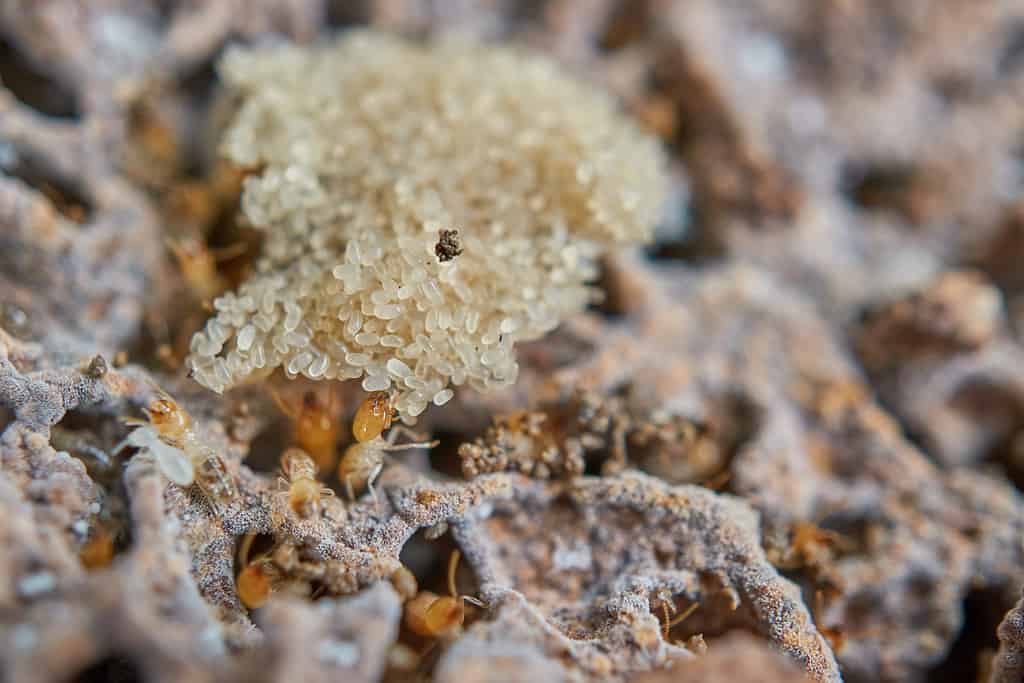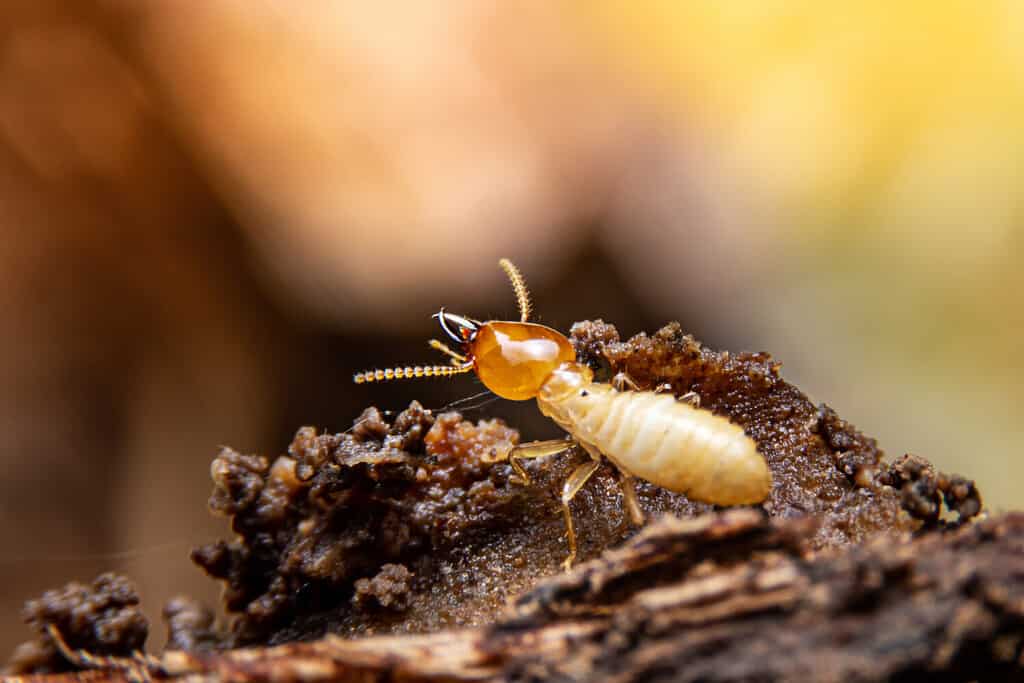The Termite Fan Club isn’t exactly brimming with fans. They aren’t on the top of many peoples’ favorite animal lists and probably get left out of numerous functions. They are one of the most hated animals on earth, but like everything, they are essential to our ecosystem. Many types of animals survive almost entirely on termites. Pangolins and anteaters love them! Now that North America is gearing up for winter, what will become of the termites? Do termites die when they get cold or remain the same active pests as usual?
Termites in the Winter

Don’t worry; your friendly neighborhood termites didn’t go far.
©Criniger kolio/Shutterstock.com
No, termites do not die in the winter. Different types of termites may behave slightly differently in winter, but overall, they become dormant and wait for temperatures to rise to the mid-70s in the spring. They tunnel deep underground to escape freezing temperatures, and if they are not able to find any form of shelter or tunnel, they might die. They are extremely good at finding cover and are survival experts, though.
If the termites are near your home, they may slow down significantly but not become fully dormant. They may even tunnel below your basement’s foundation to escape freezing temperatures. If they are the type of termite that dwells in tree stumps or similar spots, they will move towards the center to be as far away from the freezing temperatures as possible.
Type of Termites

©Witsawat.S/Shutterstock.com
In the U.S., we have three main types of termites. Those are the subterranean, dry wood, Formosan, and dampwood termites. Those four types of termites equal 45 different species in the U.S. There are over 2,000 species worldwide, so overall, 45 isn’t too bad.
The worst termite in the U.S. originated in China and is the Formosan termite. They are capable of massive amounts of destruction in a short amount of time. Out of every type of termite in the world, they are, by far, the most aggressive. They are located in Hawaii, California, and Tennessee, then from Virginia all the way south, then into Texas.
The subterranean termites are found in every U.S. state except Alaska. Since they are so widespread, they cause the most damage and are most commonly found in constructed mud tunnels, underground, or in damp aboveground but secluded communities of millions.
The damp wood termites are more significant than the other termites and, as their name states, prefer wet wood. They do not cause damage to homes because the wood is too dry. They live in arid deserts, the Pacific coast, and southern Florida.
Finally, we’ve come to the dry wood termite. These termites live in roofing material and wooden wall supports and can infest any dead wood around a home. They are typically found near a water source, like a leaky outdoor tap, water heater, or AC condensation runoff.
The photo featured at the top of this post is © Cheng_Wei/iStock via Getty Images
Thank you for reading! Have some feedback for us? Contact the AZ Animals editorial team.







